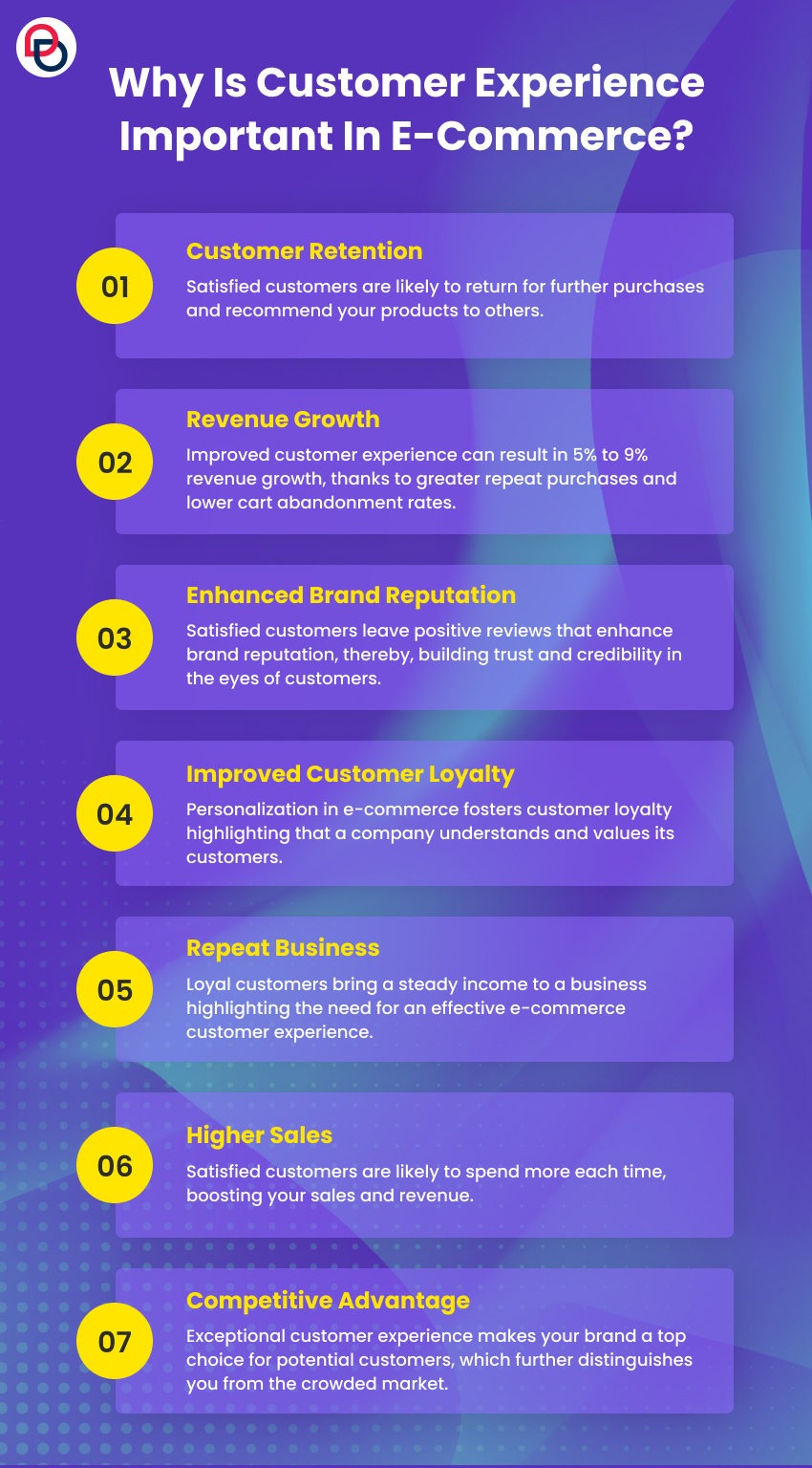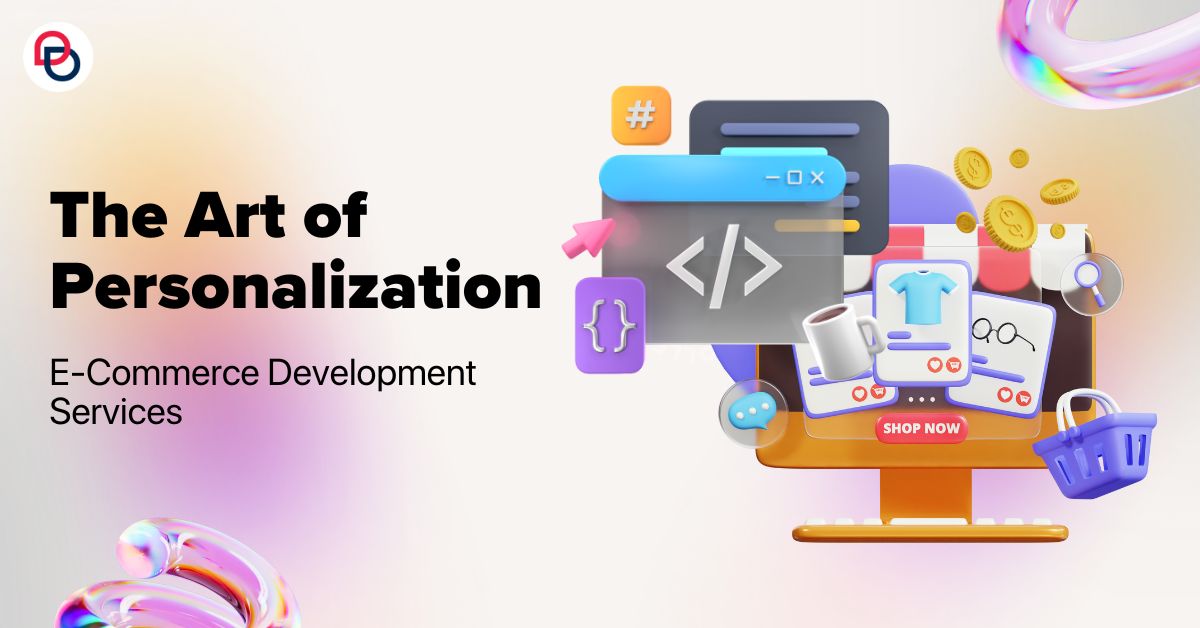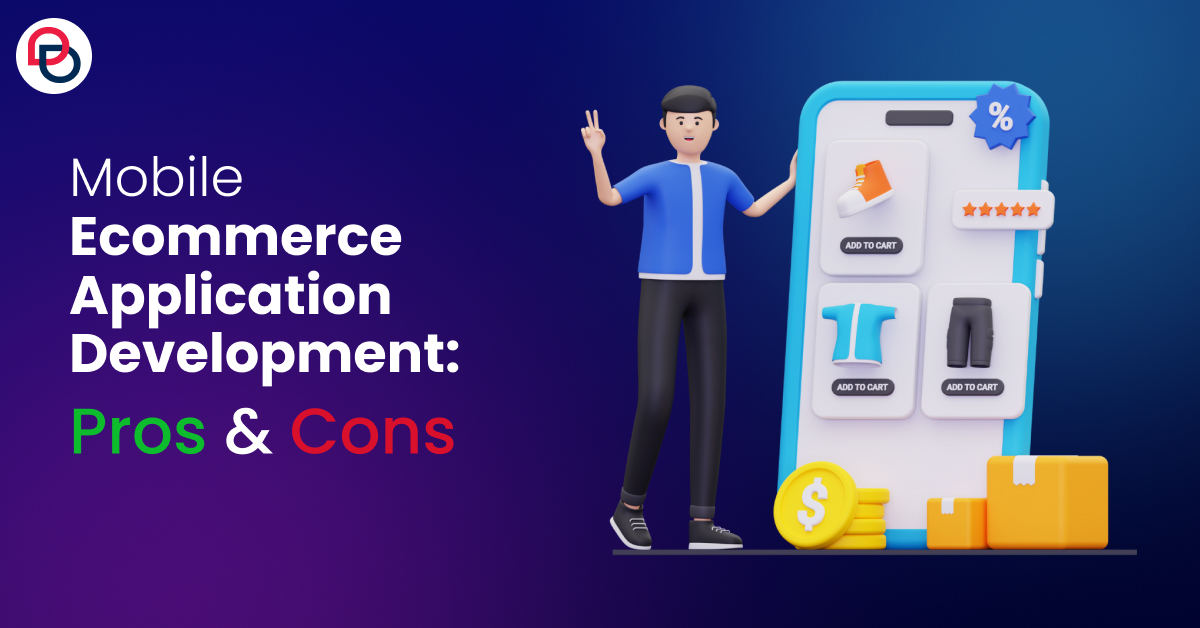The Art Of Personalization: E-Commerce Development Services
As shoppers, we just care about ourselves. We want shopping experiences that are suited to our requirements. We want the messaging to communicate directly to us. We want our chosen products to be placed at the center, and we don’t want to see products that we would never buy.
How do you design an experience like this? The solution is e-commerce personalization. It’s an effective approach to creating highly tailored experiences at scale for your customers. E-commerce development services have witnessed a paradigm shift towards creating customized experiences for customers.
Here, we will explore the significance of personalization, and understand how e-commerce development companies are shaping the future of customer experience in the e-commerce landscape.
What is the E-Commerce Customer Experience?
The term “e-commerce customer experience” refers to the sum of all touchpoints, thoughts, engagements, and feelings that occur or transfer between the customer and your organization– as experienced from the customer’s viewpoint.
It’s an expansive definition by design: the e-commerce customer journey includes everything that happens from the moment he/she hears about your brand to the moment a customer deliberately decides to quit doing business with you.
No matter the industry, a customer’s experience will usually follow the same pattern, in which they experience various needs concerning the circumstances and, hopefully, receive support from the brand they are dealing with.
Customer Experience in E-Commerce- The Importance To Note

Customer experience is important in e-commerce for many reasons, which include:
- Customer Retention
Satisfied customers are likely to return for further purchases and recommend your products to others. More than 94.9% of customers state that customer service plays a pivotal role in brand loyalty. Thus, a positive customer experience leads to customer retention. Additionally, retaining existing customers is more cost-effective than attracting and acquiring new customers. This is because existing customers possess a lower acquisition cost and a higher lifetime value.
- Revenue Growth
Improved customer experience can result in 5% to 9% revenue growth, thanks to greater repeat purchases and lower cart abandonment rates. Satisfied customers lead to higher average order values and they are likely to spend more on that brand.
- Enhanced Brand Reputation
Satisfied customers leave positive reviews that enhance brand reputation, thereby, building trust and credibility in the eyes of customers. Want to trigger a positive impact on your brand? It’s time to offer seamless interactions and boost customer experience at every touchpoint of the e-commerce journey.
- Improved Customer Loyalty
Personalization in e-commerce fosters customer loyalty highlighting that a company understands and values its customers. When a brand acknowledges customers’ preferences through customized experiences, they can return for future purchases. such customers can become loyal brand advocates.
- Repeat Business
Loyal customers bring a steady income to a business highlighting the need for an effective e-commerce customer experience. Hence, offering a great customer experience throughout the online buying journey leads to customer retention and repeated purchases.
- Higher Sales
Satisfied customers will likely spend more each time, boosting your sales and revenue. Thus, a great e-commerce customer experience helps in improving customer loyalty.
- Competitive Advantage
Exceptional customer experience makes your brand a top choice for potential customers, which further distinguishes you from the crowded market. Every customer wants a great overall experience. So, offering tailor-made customer service can make your brand a top choice for customers.
Differences between User Experience and E-commerce Customer Experience
User Experience (UX) is a more general phrase. It addresses how efficiently and easily a user may navigate and engage with a website or app. It is primarily about usability and functionality, ensuring that everything runs well.
Conversely, e-commerce Customer Experience highlights how customers feel when they engage with an online store. It’s like the overall image they get: did they enjoy shopping, was it seamless, and did they feel valued and appreciated? It is about establishing a connection and loyalty.
On a simple note, while UX focuses on the technical aspects, e-commerce CX focuses on the emotional aspects. Both are critical for an online business, but the e-commerce customer experience goes above considering relationship building and customer retention.
What is E-commerce Personalization?
Imagine an online store that can recall your favorite brands, recommends things based on prior purchases, and even welcomes you by name. That is the core of personalization in e-commerce! Businesses can utilize data and technology to understand individual preferences and behaviors, and then use that knowledge to create content, product suggestions, and offers that align with buyers’ choices on a more personal level, ultimately leading to a purchase.
Thus, e-commerce personalization can be defined as adapting an online customer’s buying experience to their unique preferences and attributes. E-commerce personalization aims to enhance the consumer experience, boost loyalty, and increase sales.
Have you ever thought about why there is a need for effective e-commerce website development? Personalization allows an outstanding user-centric interface. A well-crafted website besides attracting visitors, also keeps them engaged, enhancing the chances of conversions. Features like intuitive search options, clear product categorization, and easy checkout processes contribute to a positive user experience.
Additionally, in the era of smartphones, e-commerce application development has gained immense importance. Mobile apps provide a convenient way for users to browse and make purchases on the go. E-commerce applications should not only replicate the functionalities of the website but also offer additional features that enhance the mobile shopping experience.
What are the benefits of personalization in e-commerce?
To implement effective personalization, businesses often turn to e-commerce development services. These services encompass a range of activities, from building and maintaining websites to creating mobile applications tailored for e-commerce. E-commerce website development is the backbone of an online store, and its design and functionality play a pivotal role in shaping the customer experience.
Let’s explore the top benefits of personalization in e-commerce.
- An advanced and excellent User Experience (UX)
Considering UX and site design, there are three major areas to concentrate on. The first one is mobile optimization. E-commerce site optimization for mobile can lead to a massive increase in revenue and conversions. The second one is a fully functional search option. This helps the visitors locate the products, materials, or information quickly they require. A brand may also boost its efforts by providing real-time search suggestions with AI-powered e-commerce plugins. The third one is that an e-commerce brand must streamline the purchasing procedure for the clients.
The key message here is to optimize the customers’ whole on-site experience so that they only require minimal effort to achieve maximum results.
- Deliver personalized e-commerce experiences
Personalization provides a consistent client experience. By personalizing the buying experience to fit individual demands, you replicate the in-person shopping experience online, increasing a sense of value and recognition among your customers.
E-commerce personalization can range from making product recommendations based on prior purchases to showing material related to a customer’s geographic area to sending tailored emails depending on user behavior.
For instance, you can showcase a personalized approach through customer profiles. This feature helps in keeping data specific to your online store for every customer, giving your team a thorough grasp of their demands. Your customers receive more tailored services in response to their inquiries, which improves the entire e-commerce consumer experience.
- Understand customer’s senses and emotions
To immerse your customers in your brand’s digital experience, appeal to both their physical senses and their emotions. Thus, your digital experience must be visually and acoustically engaging at all touchpoints. Augmented and virtual reality technologies can enhance your digital experience and engage customers.
Your website’s content can effectively portray sensory experiences like taste, touch, and smell. Using high-quality photos, multimedia content, and language can generate emotional responses from online shoppers. Your e-commerce site must have a positive impact on your visitors; otherwise, they will never become customers. If you don’t create a positive emotional response, they may forget about your brand.
Also Read: Customer Experience in E-commerce: Building Trust and Conversions
- Incorporate a live chat function
Incorporating a live chat component into your e-commerce website can significantly improve your customers’ experience. With its real-time communication capacity, live chat allows for faster query response, rapid feedback, and a more engaged buying experience. Its convenience significantly minimizes the consumer’s effort, increasing overall happiness and the possibility that the customer will shop with you again. For this, you can get in touch with an e-commerce development company and customize the live chat feature as per your needs.
- Develop impressive product pages
The greatest product pages will find a balance between presenting all of the information potential buyers desire about the product, which will eventually lead them to make a purchase, and not overwhelming them with information.
Product visuals made up of high-quality photos, as well as explainer movies on your product, are all effective ways to engage a potential customer’s senses. Consider using lifestyle and textural imagery and visuals of users using your product to help potential buyers understand how your product might benefit them.
Your product page language is also critical for engaging your potential customers’ senses and, ultimately, offering a positive customer experience. To help potential consumers picture how the product may address their specific problem, you must write emotion-evoking content and provide a detailed overview of its characteristics.
- Track and boost customer experience metrics
Crucial e-commerce customer experience metrics involve net promoter score (NPS), customer satisfaction score (CSAT), average resolution time, customer effort score (CES), cart abandonment rate, bounce rate, and others.
Monitoring and interpreting these indicators can provide meaningful information, allowing you to improve your customer experience approach. For example, a substantial cart abandonment rate might indicate flaws in your checkout process, pushing you to streamline it for a more pleasant customer experience. Conversely, a drop in your CSAT score may indicate consumer dissatisfaction, necessitating more research.
- Active and responsive customer support
Your consumers may require assistance at various stages of their buying journey, and hence, you must be prepared to provide it. The most effective plan of action is to give essential help to the customers continuously.
FAQ pages, Knowledge bases, and other self-service tools allow customers to take charge of their issues and find the best answer for them – all without having to contact your customer support personnel.
- Enhance the delivery process
Having an efficient and clear delivery method continuously is critical to generating a pleasant e-commerce consumer experience. By monitoring your delivery methods and implementing proactive modifications, you may efficiently reduce delays and increase overall customer satisfaction.
One strategy to promote transparency is to provide customers with various delivery alternatives while keeping them updated on costs and delivery timelines. Furthermore, providing tracking features allows your customers to monitor their orders throughout the process, giving them peace of mind and a sense of control.
It is also critical to work with reputable shipping partners, as their performance has a direct impact on customers’ experiences. Carefully selecting the proper partners, setting clear expectations, and having open communication, can all help to ensure that deliveries run well and that your customers have a positive experience with your e-commerce channel.
Final Words
To enhance customer experience in e-commerce, remember that satisfied consumers are the key to success. Following the recommendations in this blog, you can improve your e-commerce customer experience, making it more enjoyable and seamless for them.
Remember that online shopping is constantly evolving, so keep experimenting and trying new ideas to guarantee that your e-commerce customer experience continues to improve. Hence, apply these tips to improve your e-commerce customer experience. Hire one of the best e-commerce solution providers and get started today!




